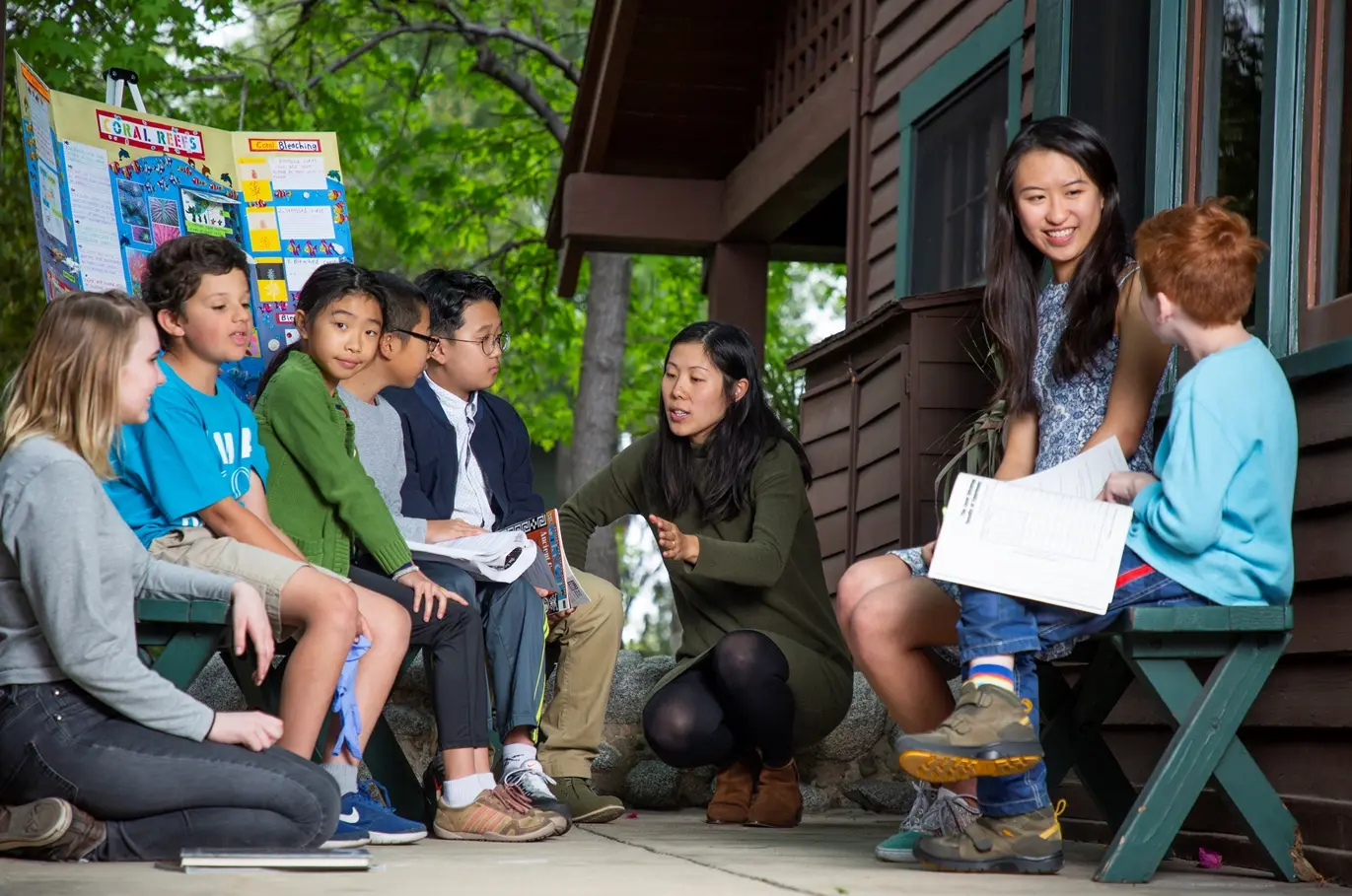By Lucy Blagg
Earlier this year, I read a book called Slow Looking by Shari Tishman. Tishman is a lecturer at the Harvard Graduate School of Education whose research “focuses on the development of thinking and understanding, the role of close observation in learning, and learning in and through the arts.” Slow Looking is, as its title would suggest, about the art and practice of looking slowly — of careful observation — and the cognitive, emotional, and spiritual benefits of doing so.
One of the educational initiatives started by Tishman and her collaborators is Out of Eden Learn, a free program that combines offline activities with online interaction and invites young people to “1. slow down to observe the world around them and listen attentively to others; 2. exchange stories and perspective with one another; and 3. make connections between their own lives and bigger human stories.” Students who use the Out of Eden Learn program come from all over the world, and interact with one another through the program’s online platform. Meanwhile, their offline activities encourage them to explore their immediate surroundings in depth. For example, in one lesson plan, students make maps of their neighborhoods; go for a walk around their neighborhood and observe their surroundings carefully, taking photographs; and interview neighbors about their experiences of their local area. In this way, students come to understand that their immediate surroundings, which might often go unnoticed, may be full of stories, beauty, and interest. At the same time, students share their maps, written observations, photographs, and interviews with fellow students through the online portal, gaining insight into the lives of others around the globe.
Out of Eden Learn began in collaboration with journalist and National Geographic Fellow Paul Salopek, who in 2013 began the Out of Eden project — a 21,000-mile-long journey that literally retraces the footsteps of the first humans who migrated out of Africa and across the world. Along the way, he interviews the people he meets, and, in his writing, connects their personal stories to the larger movements of our ongoing histories. As the introduction to his project states, “His words, as well as his photographs, video, and audio, create a global record of human life at the start of a new millennium as told by villagers, nomads, traders, farmers, soldiers, and artists who rarely make the news. In this way, if we choose to slow down and observe carefully, we also can rediscover our world.”
Having the opportunity to slow down and observe my surroundings more carefully is a gift I’ve been grateful for during this otherwise very difficult time. I read Tishman’s book just a month or two before the safer-at-home orders began. After the order went into effect, I began taking walks around my neighborhood in Pasadena more regularly, sometimes twice a day, tapping into that feeling of wonder that comes from rediscovering the world around you. I started to notice the birds on my block — some who I knew before, like the crows, mourning doves, and green parrots, and others who were new to me, like orioles, starlings, and the red-whiskered bull-bull. I also started to notice the stars, planets, and constellations on my nighttime walks. The birds and the stars started to feel like my companions, my friends. I’ve been happy to see them, day after day, night after night. Recognizing them, getting to know them even a little bit, I feel connected to something bigger than myself — the endless mystery and wonder of this world we inhabit.
This summer, I had the good fortune to teach two online classes for IEA. One, called Bees and Other Builders, was all about the architects of the animal world. We looked at structures built by vertebrates, such as beavers and birds, as well as structures built by invertebrates — mostly insects, such as ants, bees, and termites. I am particularly fascinated by these tiny creatures. As David Attenborough notes in the BBC documentary series Life in the Undergrowth, these small life forms are largely responsible for making the earth habitable for all of us backbone animals. The documentary offers the opportunity to observe them — and some of the incredible structures they build — in detail. Many of them are microscopic, unable to be seen by the unaided human eye. The world is full of such creatures. Whenever I’m feeling down, I think about how a single gram of bacteria can be home to up to one billion bacteria. Somehow, this knowledge helps me put my problems in perspective. It reminds me that vitality and mystery are constantly with us, often in the most overlooked of places.

